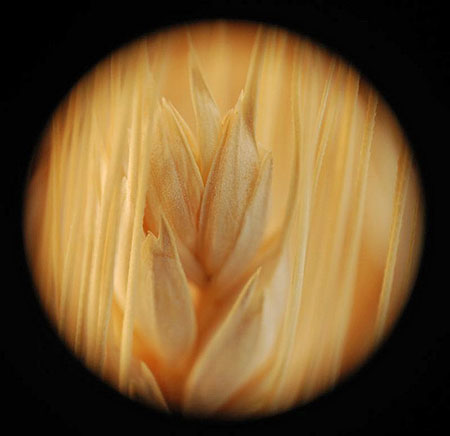|

by Anna Hunt
March 3, 2014
from
Waking Times Website
|
Anna
Hunt is a staff writer
for WakingTimes and an entrepreneur with over a decade
of experience in research and editorial writing. She and
her husband run a preparedness e-store outlet at
www.offgridoutpost.com,
offering GMO-free storable food and emergency kits. Anna
is also a certified Hatha yoga instructor. She enjoys
raising her children and being a voice for optimal human
health and wellness. |

Many people are discovering that modern
wheat is
the perfect chronic poison.
The consumption of wheat and
wheat-containing products has been linked to many devastating and
chronic health conditions including,
...and more.
As a result, many people are trying out
gluten and wheat-free diets and quickly discovering that within just
a week or two, their health improves, they have more energy, and
curious, lingering conditions such as unexplainable skin rashes seem
to clear up nearly overnight.
The over-hybridization of wheat and the
corporate seed monopoly's war on bio-diversity mean that the
vast majority of wheat farmers are producing the same kind of wheat,
and it is becoming increasingly difficult to find high-quality
heritage grains for consumption.
So for people who've discovered first
hand how modern wheat is assaulting their health and well-being, it
is important to find alternative grains that can be used as freely
as common wheat.
The best three alternatives to modern
toxic wheat are all very highly nutritious grains that are
increasing in popularity and availability:
1.
Einkorn
For people who are looking for wheat
that doesn't come with toxicity and chronic poisoning of Triticum
aestivum, today's most common 'bread wheat,'
einkorn wheat is
the perfect alternative.
Known as Triticum monococcum,
einkorn is a heritage grain that has been harvested for over
10,000 years, is highly nutritious and doesn't contain the
gluten peptide that is in modern wheat.
Einkorn is now popularly available
online in the form of
prepared flours,
pastas,
seed and other products.
2. Teff
Considered by many to be an up and
coming 'superfood,' the cereal grain
teff - Eragrostis tef - native to Ethiopia is a perfect gluten-free alternative to
wheat, and is gaining in popularity and demand.
Additionally, as a crop, it thrives
in dry conditions and can be used to feed many people in drought
stricken areas, and may be a successful grain to grow in
drought-stricken California.
Considered a
superfood by many, teff
is versatile for cooking and is poised to become a global crop
over the coming years.
Teff is available as a whole grain,
ground in flour, and as seed for planting.
3. Quinoa
Native to South America Andean
region (Ecuador, Bolivia, Colombia and Peru), this
already widely popular grain is a delicious and highly
nutritious substitute for modern wheat, and is very versatile to
cook with.
Considered on of the world's
greatest superfoods, the edible seeds of
quinoa are extremely
high in protein and calcium and are thus highly valuable to
vegetarians and vegans.
Frequently prepared as a side dish
and used in salads, this grain can also be used to make breads,
pastries and pasta dishes. Quinoa is available in whole grain,
pre-ground into flour, in pastas and in other products.
At this point in time, sourcing these
terrific alternatives to
toxic modern wheat are without doubt a bit more difficult and
more pricey than consuming the modern wheat that is so ubiquitous in
modern food today.
However, the benefits on your health and
mental wellness quickly make up for the extra expense.
Additionally, because modern wheat is
used in so many processed and restaurant foods today, if you make a
commitment to quitting toxic wheat then you'll simply have to
abandon many processed foods that are
introducing other toxins like
MSG and the myriad chemicals used in
food packaging, and you'll also have to dine out less which will
save money and reduce your consumption of cheap salts and oily
foods.
Overall, integrating einkorn, teff and
quinoa into your diet and ditching modern wheat is a fantastic way
to improve the health and well-being of you and your family.
Sources
|

